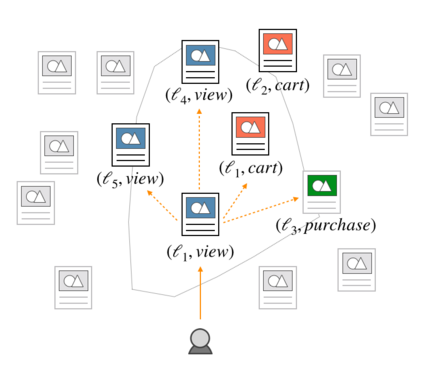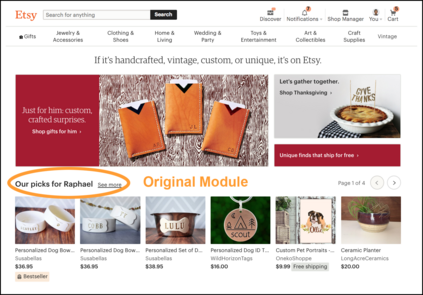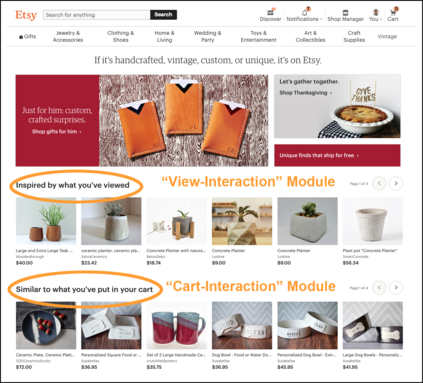Industry-scale recommendation systems have become a cornerstone of the e-commerce shopping experience. For Etsy, an online marketplace with over 50 million handmade and vintage items, users come to rely on personalized recommendations to surface relevant items from its massive inventory. One hallmark of Etsy's shopping experience is the multitude of ways in which a user can interact with an item they are interested in: they can view it, favorite it, add it to a collection, add it to cart, purchase it, etc. We hypothesize that the different ways in which a user interacts with an item indicates different kinds of intent. Consequently, a user's recommendations should be based not only on the item from their past activity, but also the way in which they interacted with that item. In this paper, we propose a novel method for learning interaction-based item embeddings that encode the co-occurrence patterns of not only the item itself, but also the interaction type. The learned embeddings give us a convenient way of approximating the likelihood that one item-interaction pair would co-occur with another by way of a simple inner product. Because of its computational efficiency, our model lends itself naturally as a candidate set selection method, and we evaluate it as such in an industry-scale recommendation system that serves live traffic on Etsy.com. Our experiments reveal that taking interaction type into account shows promising results in improving the accuracy of modeling user shopping behavior.
翻译:产业规模建议系统已成为电子商务购物经验的基石。 对于Etsy这个拥有5 000多万手工和老旧物品的在线市场来说,用户开始依赖个人化建议来从大量库存中展示相关物品。Etsy购物经验的一个特征是,用户可以多种方式与自己感兴趣的物品互动:他们可以查看、喜欢、把它添加到一个收藏中、把它添加到手推车、购买它等等。我们假设,用户与一个项目互动的不同方式表明不同的意图。因此,用户的建议不仅应当基于其过去活动的项目,而且还应当基于他们与该项目互动的方式。在本文中,我们提出了一种创新的方法,用于学习基于互动的项目嵌入于它们感兴趣的物品:他们可以看到它,喜欢它,把它添加到一个收藏中,把它添加到一个收藏,把它添加到一个收藏,添加到工具中。我们所学的模型让我们能够适应一种项目间互动的准确性,通过一个简单的内部产品来与另一个选择方式进行互动。我们用一个简单的内部产品模型来进行互动。我们用一个系统来对一个系统进行自我定位的系统进行自我定位,用来评估效率的系统,我们用来评估它作为一种自我定位的模型,作为一种自我定位的模型,用来评估一个系统,用来评估一个自我定位。












